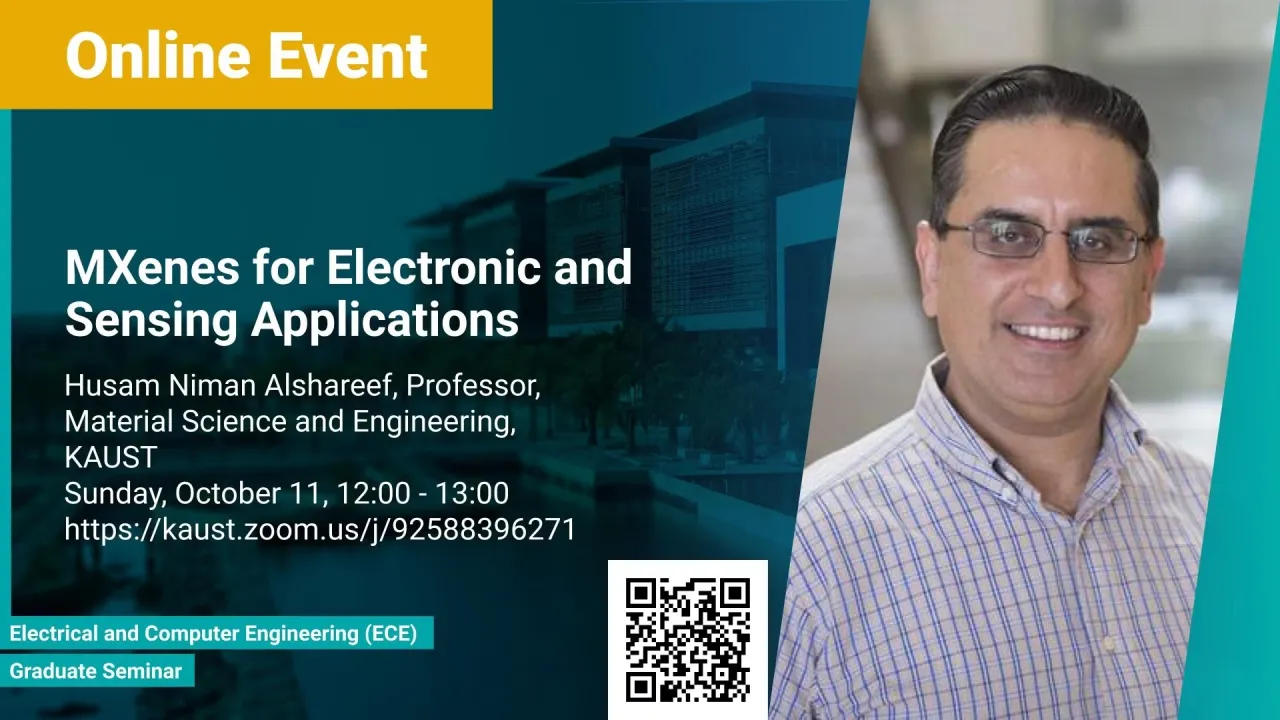
MXenes for Electronic and Sensing Applications
- Professor Husam Alshareef, Material Science and Engineering, KAUST
KAUST
This talk will focus on the device applications of MXenes and MXene-derived functional materials. Our group has been developing device concepts that capitalize on the rich and promising properties of MXenes. For example, the excellent electrical conductivity of MXenes makes them good candidates as contact materials electronics (printed, wearable, and stretchable electronics) both as local and global contacts. We have demonstrated that MXenes can be used as electrical contacts in thin-film electronics, CMOS devices, quantum-dot transistors, LEDs, and solar cells.
Overview
Abstract
This talk will focus on the device applications of MXenes and MXene-derived functional materials. Our group has been developing device concepts that capitalize on the rich and promising properties of MXenes. For example, the excellent electrical conductivity of MXenes makes them good candidates as contact materials electronics (printed, wearable, and stretchable electronics) both as local and global contacts. We have demonstrated that MXenes can be used as electrical contacts in thin-film electronics, CMOS devices, quantum-dot transistors, LEDs, and solar cells. The plasmonic properties of MXenes can be used to develop broad-band plasmonic photodetectors working in the visible range. Capitalizing on the abundant surface charges of MXenes, we have developed conducting MXene-polymer hydrogels with unique (skin-like) sensing capabilities that outperform existing hydrogel sensors. These hydrogels could detect magnitude and sign of stress, speed, facial expression, touch, and sound. The hydrogel could also harvest energy from ultrasound, which can be stored or coupled to power other devices.
Further, we have developed a new direction in MXene transformations, where the 2D nature of MXenes is leveraged to make high-performance functional materials. For example, highly-textured ferroelectric crystals, piezoelectric crystals, and piezoluminescent crystals were fabricated. Besides, 2D metal-organic frameworks and their thin films were made using MXene as metal source resulting in highly-texture MOF thin films at the wafer scale. These films have several useful device applications. These and other recent developments in our group will be discussed.
Brief Biography
Husam Alshareef is a Processor of Materials Science and Engineering at King Abdullah University of Science and Technology (KAUST). He obtained his PhD at NC State University in 1996 followed by a post-doctoral Fellowship at Sandia National Laboratory, USA. He then embarked on a 10-year career in the semiconductor industry, holding positions at Micron Technology and Texas Instruments. There he worked on developing new materials and processes for the microelectronics industry. In 2009 he joined KAUST, where he initiated an active research group focusing on energy storage and electronics. He has won the UNDP Undergraduate Fellowship, Seth Sprague Physics Award, NC State Dean’s Fellowship, U.S. Department of Education Electronic Materials Fellowship, the SEMATECH Corporate Excellence Award (2006), two Dow Sustainability Awards (2011) and (2014), AH Shoman Award for Excellence in Energy Research (2016), KAUST Distinguished Teaching Award (2018), and the Kuwait Prize for Sustainable and Clean Technologies (2018). He is a Fellow of the American Physical Society, a Fellow of the Royal Society of Chemistry, IEEE Distinguished Lecturer in Nanotechnology. He is a Clarivate Analytics Highly Cited Researcher in Materials Science.